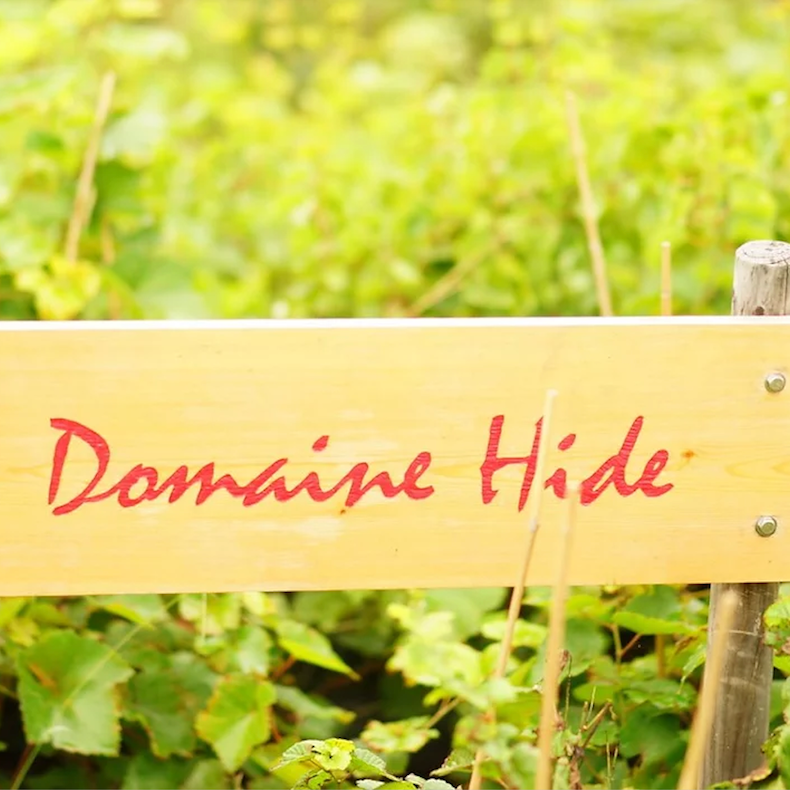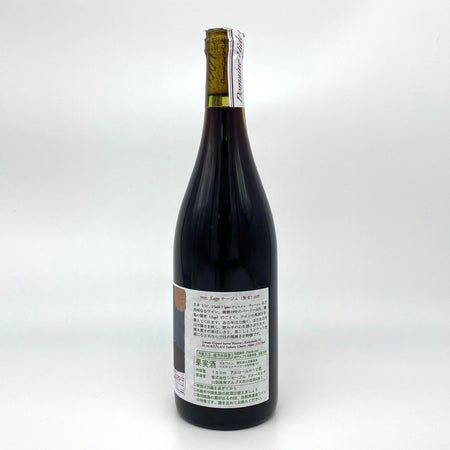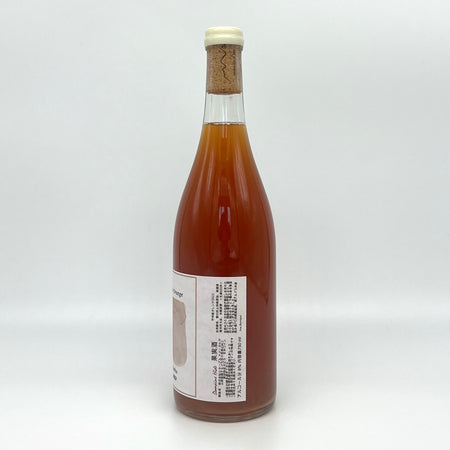Domaine Hide
Minami-Alps, Yamanashi
People
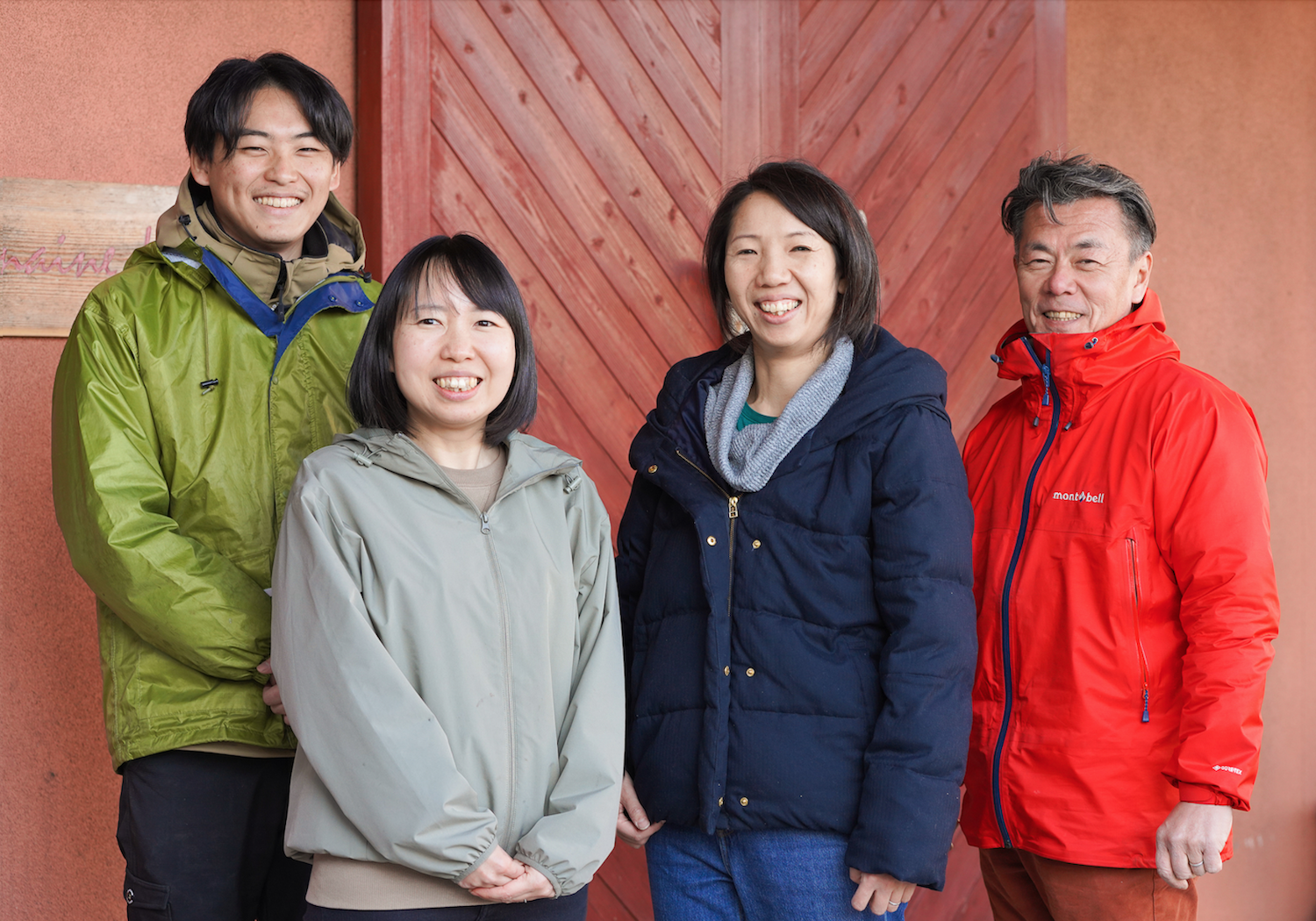
Domaine Hide is a winery in Minami-Alps, Yamanashi. It is run by Hideo Shibutani, several winemakers, and a group of young people who have moved to the area with farming aspirations, known as the “Lokal Vitalisation Cooperator”.
Hideo has a unique background as a winery owner. He was born in Kanda, Tokyo, grew up in Osaka, and worked for an airline company after graduating from a university in Tokyo. He worked as an air traffic controller and airport manager at an airfield on the Kerama Islands in Okinawa, an island with a population of about 50 people. Later, when the airline company he worked for merged with another company, he quit and decided to remain in Kerama to make a career out of scuba diving, which he had been familiar with since junior high school, and later he established a scuba diving school. There, while teaching scuba diving to high school students and interacting with children who were not attending school, he faced the reality that trying to manage with love alone would not work, and returned to Tokyo. He studied clinical psychology at the University of Tokyo Graduate School and, from the age of 32, worked as a clinical psychologist for students and adults.
Then, on 11 March 2011, he experienced the Great East Japan Earthquake. He wondered what he could do and what he could leave behind by the time he was 60, and realised that as a psychologist he not only wanted to listen to people's hearts and minds but also to express himself in some way. He then decided to take a leave of absence from his job as a clinical psychologist, which he had held for 18 years, to go to a winery in Katsunuma, Yamanashi, known for its Koshu wine, to learn how to make wine and fruit wine, which he loves, at the age of 50. He chose Katsunuma as the site of his training because it was the site of the very best Japanese wine. Then, in 2015, after three years of training in Katsunuma, he established Domaine Hide.
The scuba diving work mentioned earlier helped him to arrive at the biodynamic winemaking method. When he was living in Kerama, his fellow divers were fishermen and would dive with lights to catch fish at around 8 pm. He was taken along and helped with the fishing. This is how he came to think of it after more than 3,000 dives in the ocean, including his diver experience.
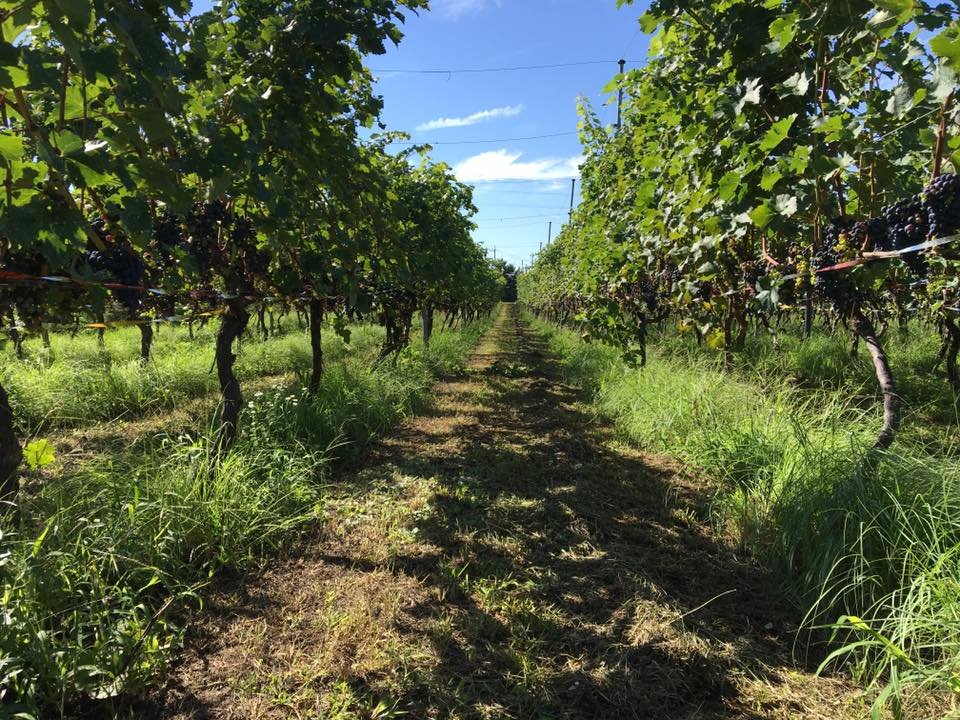
“Why do people use so much pesticide on the fields when the sea grows so much delicious seafood without any chemicals or other artificial substances?”
He also learnt that nature is greatly affected by the tides. Based on these experiences, he has been growing his crops with a biodynamic approach since he was running a small farm near the airport, and this approach has continued to the present day on the vineyards.
Hideo says he wants to cultivate grapes and make wine more naturally from now on. In order to achieve this, he will be working on collecting precise data on the relationship between the tides and the condition of the grapes. In this way, while people say that Japanese wines are often light-bodied and have modest taste, his future goal is to broaden the range of Japanese wines and establish a new category by producing wines with a rich flavour, which can be matched with a variety of meals.
Vineyard
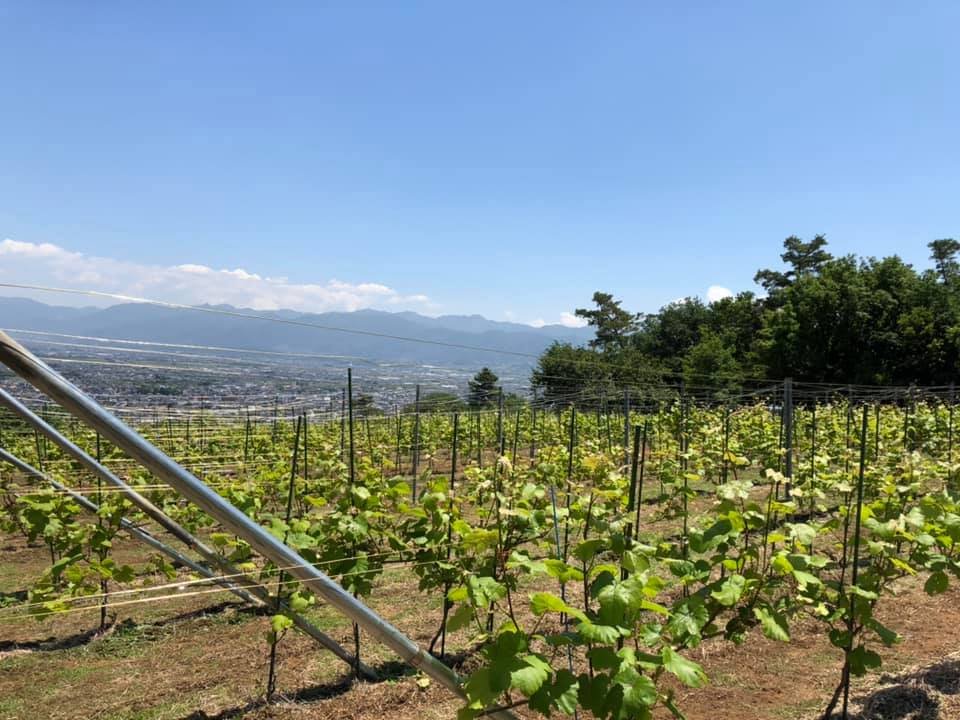
To find a location for his winery, Hideo visited 46 sites across Japan and watered each one. The aim was to find a place where water could soak into the soil at the fastest rate. Starting in Yamaguchi, the westernmost prefecture on Honshu Island, he travelled eastwards, including Shikoku, to Hokkaido in search of the best-drained land, finally ending up in present-day Minami-Alps.
People told me that Minami-Alps is a place where water seeps in at a rapid rate and that it has long been told that it is “a land that scorches even on a moonlit night” which means less rain and drier weather. This is what made him decide to settle down there. The Yatsugatake Oroshi, a wind blowing over Mount Fuji, disperses the clouds in the sky and lengthens the hours of sunshine. Minami-Alps is one of the most drought-prone areas in Japan, where our ancestors struggled. However, it was the perfect place to start organic farming. This is because where there is a lot of rainfall, it is difficult for organic farming to produce grapes.
The vineyards are also the kind of land where every time you dig a hole, the shovel hits a stone and breaks. The Kaikoma plutonic rocks, which originate from the Neogene Piacenzian (25 million years ago) Misaka Formation, which flowed from the Midaigawa River in Minami-Alps, are buried there. However, in such rough terrain, plants extend their roots downwards due to the lack of nutrients. This allows them to absorb a variety of minerals and other elements from the ground, giving the grapes a more complex taste. The plutonic rocks also contain iron, which is also the reason for the high quality of the grapes from Minami-Alps.
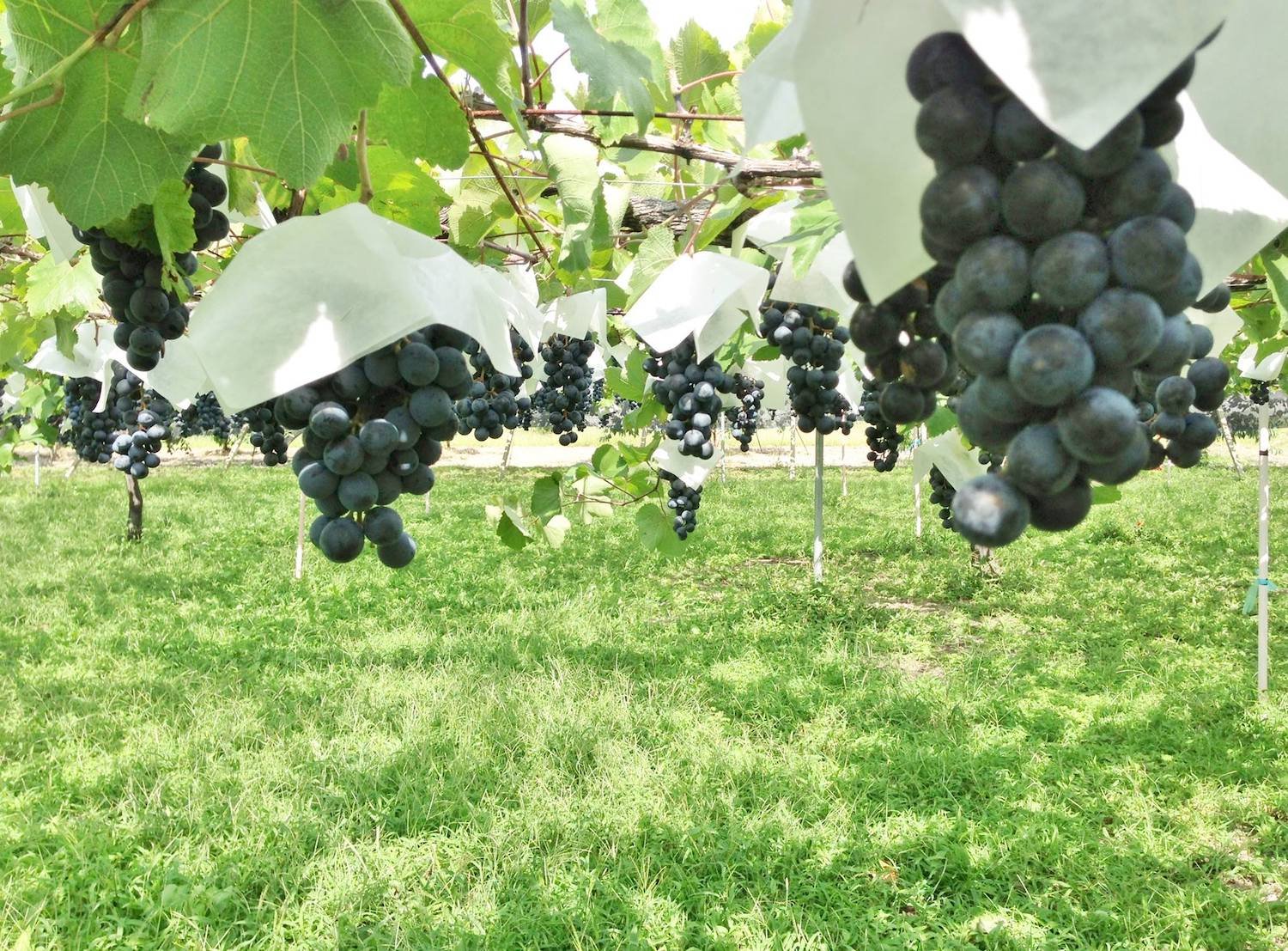
The main varieties grown in the vineyards are Muscat Bailey A and Pinot Noir. Hideo grows Muscat Bailey A because of his admiration for the beautiful “cherry blossom” colour of the must, which can only be seen once every few years. He grows the grapes without any chemical pesticides and harvests them later than other farmers. By doing so, he says, the wine is able to give off a honey-like aroma, rather than the candy-like scent often associated with wine made of Muscat Bailey A. He also grows Pinot Noir to test his skills. He also tries to grow this variety, which is not indigenous to Japan, because it is made all over the world and the quality of the wine he makes with it shows his level as a farmer and winemaker by global standards.
One of the main commitments in his viticulture is to "produce wine from each and every vineyard". Just by crossing one road, the nature of the vineyard and the taste of the grapes will change. If you make wine by mixing such different grapes, you may indeed produce a delicious product, but you will be skimping on viticulture and the vineyard.
The second is to "follow the moon and vinify naturally". As a former professional diver, his body remembers the force of the moon's gravitational pull, which causes hundreds of millions of tonnes of seawater to rise and fall. And human bodies and plants are affected by such lunar forces and tides. For example, the full and new moons, when hundreds of millions of tonnes of seawater move, are when grapes are at their most powerful. In order to get the best out of his grapes, he is always with the moon and harvesting according to the moon's age is the basis of his winemaking process.
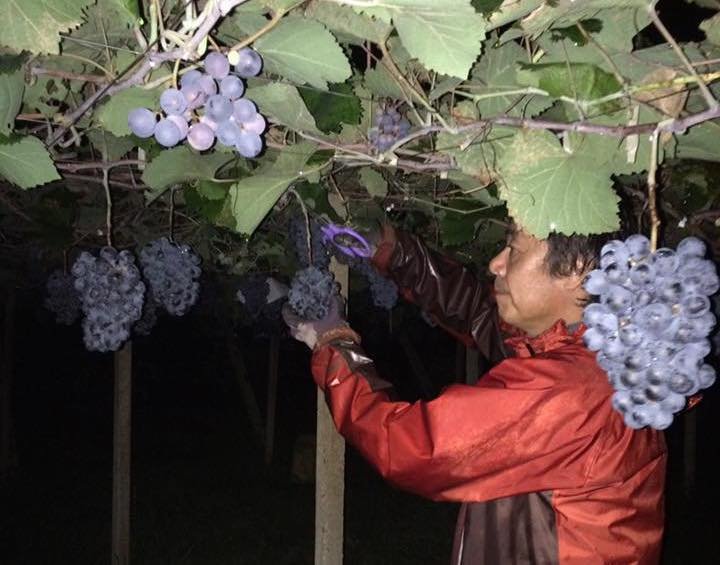
The third is, “don't let the grapes work too hard”. Japanese viticulture is so excellent that it is possible to grow 500 bunches of grapes from a single vine. However, for him, the grapes grown in this way “work too hard”. They have smelling of fertiliser and are prone to early rotting. The resulting wine is also not tasty. Therefore, he grows his grapes with the fear that they will work too hard. “It's not good to work too hard, and it's the same with people," he says.
Winemaking
The winery was built in an old private house. Hideo leaves his family in Tokyo and works with his colleagues at the winery, live-in and winemaking 24 hours a day. He decided to live in the winery because he started his wine career late, in his fifties, and he needed to be around wine 24 hours a day to catch up with people who had started much younger.
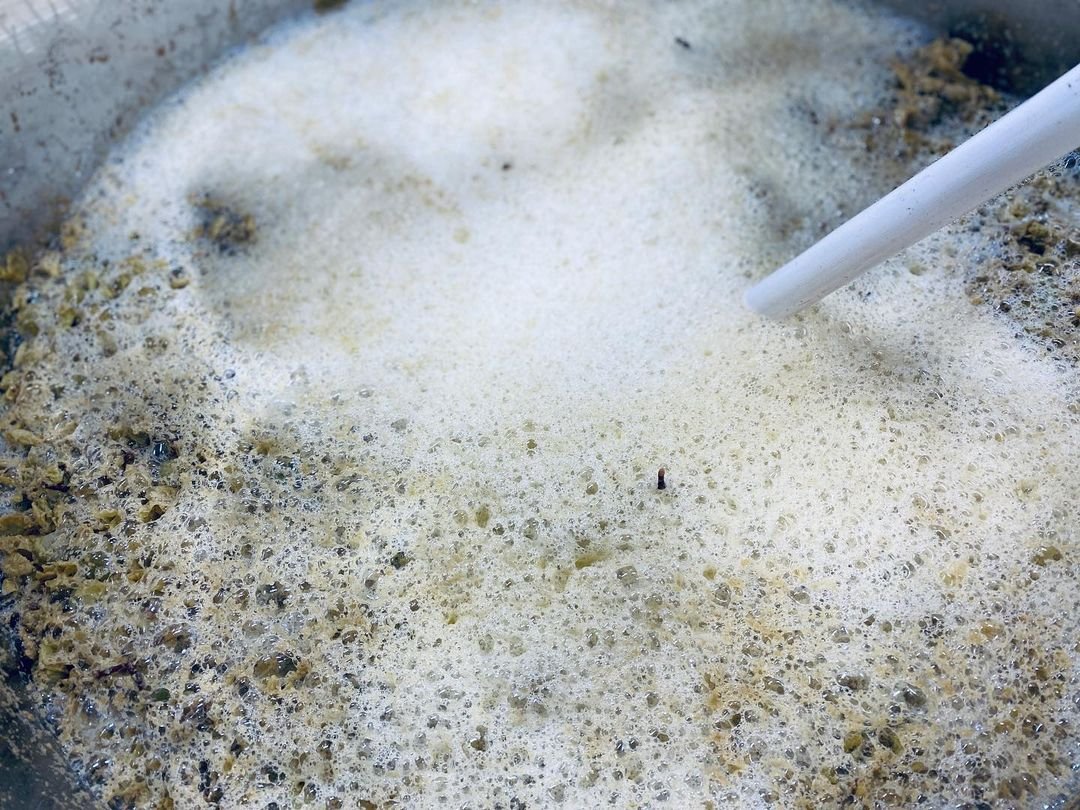
In winemaking, too, he is with the moon. The most important part of the moon's age is in the racking process. The taste of wine made at low tide is different from that made at high tide, with low tide resulting in a harder wine and high tide resulting in a mellower wine.
Domaine Hide also uses barrels made by Taransaud and Nadalié. High-quality barrels have a fine grain and good seams. If the grain is wide, micro-organisms can get in through the scratches in the seams and adversely affect the quality of the wines. For this reason, they use some of the best barrels in the world and mature the wine there.
And “listening to the sound” is another particularity. Wine makes different sounds when it is poured into barrels and when it ferments inside. For example, the speed of fermentation varies depending on the position of the barrels in the cellar, which can also be detected by the difference in sound. Based on the sound, the wine is bottled at the "right moment".
Grapes are usually crushed using a destemmer, but almost all grapes at the winery are made into wine by foot treading on the grapes while wearing a sanitary jacket. This method has been used in France for a long time, and the taste of the wine is said to change depending on the character and force of the person stepping on the grapes, in other words, the difference in the way they are stepped on. If you tread lightly, the grape grains remain and the maceration gives the wine a mellow taste, whereas if you tread firmly, the grapes are completely crushed, giving the wine an edgy, long-aged taste. They adjust the amount of pressure, imagining how the drinkers will tilt their glasses.
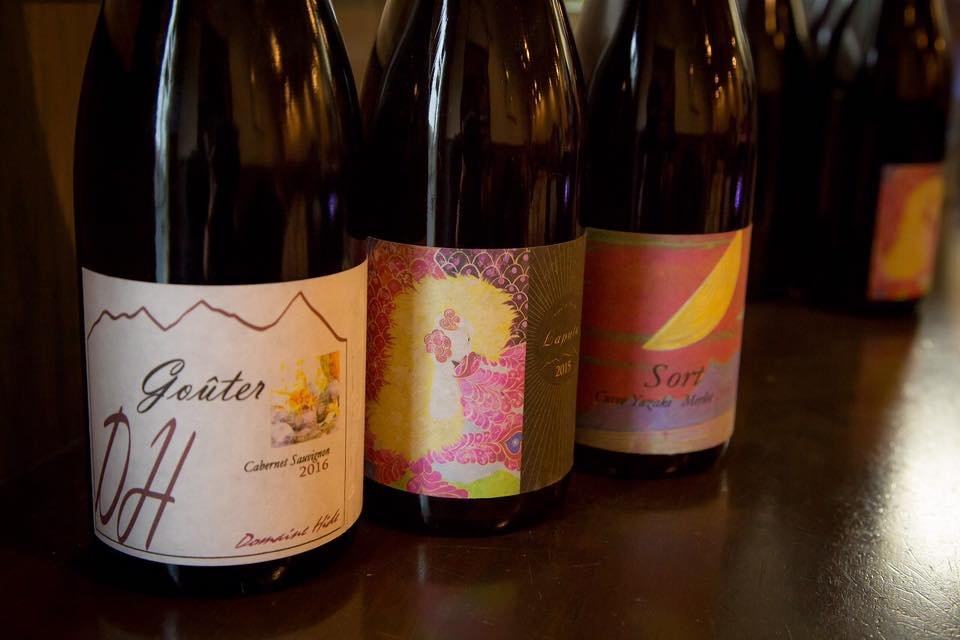
Hideo hopes that through this export to the Netherlands and Europe, people who drink his wines will one day visit Japan on a trip. For him, wine is also a way of communicating “Japaneseness”.

